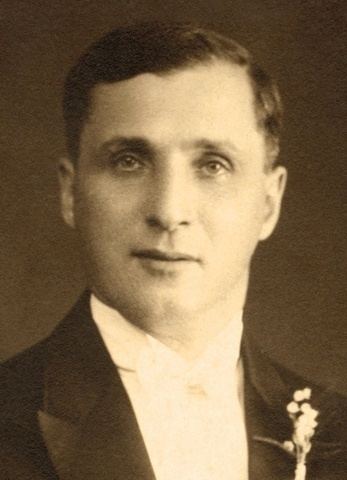Name Herman Bank | Died November 2, 2012 | |
 | ||
Education | ||
Herman Bank (October 26, 1916 - November 2, 2012) was an American mechanical engineer who worked for the Jet Propulsion Laboratory (JPL) from 1947 to 1984. He was one of the “Rocket Boys” who were first generation scientist and engineers of the Space Age.
Contents
While working at JPL Bank worked as a mechanical engineer on the Bumper Project, supervised the structural design for Explorer 1, and served as supervisor on the Ranger and Surveyor missions to the Moon.
In retirement Bank founded the Volunteer Professionals for Medical Advancement, a group of JPL/Caltech retirees that works with doctors to develop new medical technologies.
Early years
Herman Bank was born in Vineland, New Jersey to Russian-Jewish immigrants Sophie and Max Bank. Bank’s formal education began with an Associate of Arts degree from Los Angeles City College in engineering. In 1935 he earned a degree from University of California, Berkeley in mechanical engineering. Bank married Irene Gross in 1943 and had three sons Sidney, Ronald and Michael.
Career
Herman Bank joined JPL in 1947 as a mechanical engineer. One of his first assignments was to work with German scientist Wernher von Braun on the Bumper Project (AKA Bumper Missile Program). Bank was of Jewish heritage, and refused to shake the hand of or socialize with the ex-Nazi von Braun. However he was very interested in the Bumper Project and agreed to work with von Braun on it. The Bumper Project was a two-stage missile program that resulted in the first man-made object to reach extraterrestrial space, setting a record altitude of 250 miles. Bank supervised the structural design for Explorer 1, which launched January 31, 1958 and became America’s first satellite. Eventually Bank worked as supervisor on the Ranger and Surveyor missions to the Moon.
In the 1970s Bank developed a joint program with Cal Tech, JPL, NASA, and Los Angeles area hospitals, which allowed him to work on medical advancements that were of particular interest to him. This collaborative program goal was to develop innovative solutions to medical challenges including development of a bag that increased the shelf life of stored blood and an improved X-ray technique that eliminated multiple exposures.
Retirement
Herman Bank initially wanted to attend medical school, but was not able to afford the lengthy education and choose to pursue mechanical engineering instead. Upon retirement in 1983 Bank decided to nurture his interest in the medical field and formed the Volunteer Professionals for Medical Advancement (VPMA).
VPMA was established in 1996 by Bank and works with doctors and hospitals to advance current medical technologies and develop new ones:
Other notable accomplishments
Inspired by his surfing sons and the California surf lifestyle, Bank invented the Multiboard in 1964. The Multiboard was a bisected long board and solved the transport issues that long boards posed. The original prototype was crafted from a Hobie long board (donated by Hobie Alter). Two of Bank’s Multiboards were taken on Bruce Brown's film epic, The Endless Summer in the event that small planes were unable to transport the long boards used in the movie.
Present
Herman Bank lived in Altadena, California with his wife of sixty-seven years Irene.
